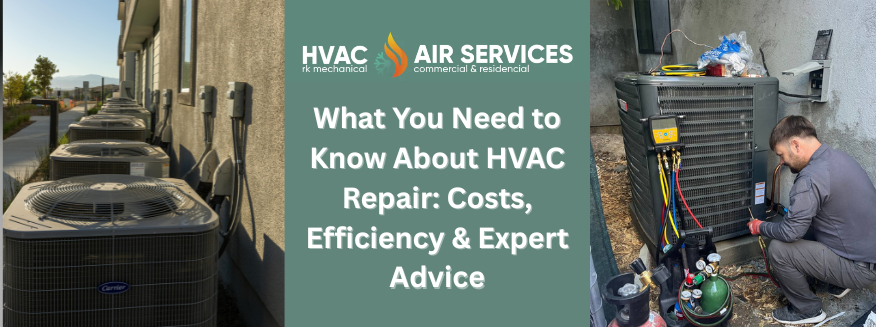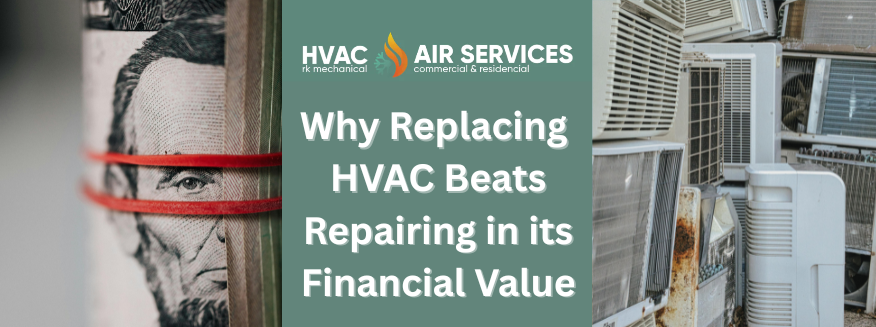Keeping your home comfortable is crucial, and a reliable HVAC system is key. If you live in Northern California and your current system is old or not working well, it might be time for a replacement. This guide will help you understand the HVAC replacement cost in Northern California, including various factors, system types, and money-saving tips.
Podcast for this article:
Why Replace Your HVAC System?
Replacing an HVAC system might sound like a big task, but there are good reasons to do it. Older systems can become inefficient, leading to higher energy bills and frequent repairs. Newer HVAC systems are more energy-efficient, which saves you money in the long run. Plus, a new system ensures better indoor air quality and overall comfort, making your home more pleasant.
In California, specifically, upgrading to a newer HVAC system can also provide substantial environmental benefits by reducing your carbon footprint. With the state’s focus on energy efficiency and sustainability, replacing your HVAC system can align with California’s green initiatives.
Factors Affecting HVAC Replacement Cost
Understanding what affects the average cost to replace HVAC system can help you budget better. Here are the main things to consider:
- Type of HVAC System: The type of system you choose affects the cost. Central air conditioners, ductless mini-splits, and heat pumps each have different price tags.
- System Size: The size of the unit needed depends on your home’s size. Larger homes need more powerful systems, which cost more.
- Brand and Efficiency Rating: High-efficiency systems from well-known brands might cost more upfront but save you money on energy bills over time.
- Labor Costs and Installation Complexity: Installation costs vary based on how complex the job is. If ductwork needs to be modified, labor costs will be higher.
- Additional Components: Upgrading thermostats, adding air purifiers, or making other changes can increase the total cost.
- Regional Pricing Differences: Prices in Northern California may be different from other areas due to local demand, cost of living, and regulations.
Types of HVAC Systems and Their Costs
Let’s look at the different types of HVAC systems and their costs:
- Central Air Conditioners: These systems are popular for their ability to cool the entire home through a network of ducts. They are efficient and provide consistent temperatures throughout the house. The cost to replace a central air conditioning system usually ranges from $3,000 to $7,000, depending on size and efficiency. Central air conditioners are ideal for large homes and provide powerful cooling.
- Ductless Mini-Splits: Perfect for homes without existing ductwork, ductless mini-splits offer flexible installation options. They consist of an outdoor unit and one or more indoor units, providing targeted cooling to specific areas. Replacement costs can range from $2,000 to $8,000. Ductless mini-splits are energy-efficient and can be installed in homes where adding ductwork is impractical.
- Heat Pumps: Heat pumps provide both heating and cooling, making them a year-round solution. They transfer heat from the outside to the inside during winter and reverse the process in summer. Replacing a heat pump system typically costs between $4,000 and $10,000. Heat pumps are ideal for moderate climates and can significantly reduce energy consumption.
Each type has pros and cons, so consider your needs and budget when deciding.
Tips for HVAC Replacement Costs Savings
Replacing an HVAC system can be expensive, but there are ways to save money:
- Rebates and Incentives: Look for local rebates and incentives for energy-efficient systems. California offers various rebate programs to encourage energy efficiency upgrades. Check with your utility company and state programs like the California Energy Commission’s incentives.
- Find Reputable Contractor: Get quotes from multiple contractors to ensure you’re getting a fair price. Look for contractors with good reviews and certifications.
- Regular Maintenance: Maintain your new system regularly. Proper care can extend its life and keep it running efficiently, reducing the need for costly repairs.
Financing Options to Help You Cover HVAC Replacement Cost
Financing can make the average cost to replace HVAC system more manageable. Here are some options:
- Loans: Home improvement loans are a common choice for financing HVAC replacements. They offer fixed interest rates and predictable monthly payments.
- Credit Cards: Using a credit card for HVAC replacement can be convenient, especially if you have a card with a low-interest rate or a promotional 0% APR period.
- Manufacturer Financing: Some HVAC manufacturers offer financing plans with favorable terms. These plans can spread the cost over several months or years.
FAQs About HVAC Replacement Cost
- How long does it take to replace an HVAC system? The replacement process usually takes one to three days, depending on how complex the installation is.
- Are there any hidden costs to be aware of? Yes, you might have additional costs like ductwork modifications, permits, and disposal of the old system.
- How can I estimate the size of the unit I need? Contractors use something called a Manual J load calculation to determine the right size for your home.
- What is the average cost to replace an HVAC system in Northern California? On average, the cost ranges from $5,000 to $10,000, depending on various factors.
- Do I need to replace ductwork when I replace my HVAC system? Not necessarily, but if your ductwork is old or damaged, it’s a good idea to replace it for better efficiency.
- Can I replace just the outdoor unit without replacing the indoor unit? It’s possible, but not recommended. Replacing both units ensures optimal performance and energy efficiency.
- Are there any tax credits or rebates available for replacing an HVAC system? Yes, there are often tax credits and rebates for energy-efficient HVAC systems. Check with local authorities or your HVAC contractor for details.
- How do I choose the right HVAC contractor for the job? Look for licensed and insured contractors with good reviews. Get multiple quotes and ask for references to ensure you choose a reputable professional.
- What should I do to prepare for the installation of a new HVAC system? Clear the installation area of any obstructions, inform the installer of any specific requirements, and plan for someone to be home during the installation process.
- Will a new HVAC system increase the value of my home? Yes, a new HVAC system can increase the value of your home by improving energy efficiency and overall comfort, making it more attractive to potential buyers.
Why Choose RK Mechanical Air Services?
Choosing the right contractor is crucial for your HVAC replacement cost savings. RK Mechanical Air Services is a top choice for homeowners in Northern California. Here’s why:
- Experienced Professionals: RK Mechanical Air Services employs licensed and insured technicians with extensive experience in HVAC installation and repair.
- Customer Satisfaction: The company has a strong reputation for excellent customer service, with numerous positive reviews and testimonials.
- Competitive Pricing: They offer competitive pricing and transparent quotes, ensuring you get the best value for your investment.
- Quality Products: RK Mechanical Air Services uses high-quality HVAC systems from trusted brands, ensuring reliable and efficient performance.
- Rebates and Financing: They can help you navigate available rebates and financing options, making the replacement process more affordable.
Conclusion
In summary, HVAC replacement cost in Northern California varies based on several factors, including the type of system, size, and installation complexity. By understanding these factors and exploring different types of systems, you can make an informed decision. Remember to check for rebates, get multiple quotes, and consider financing options to manage the expense. For personalized advice, contact a local HVAC professional who can assess your specific needs and provide accurate cost estimates.





































